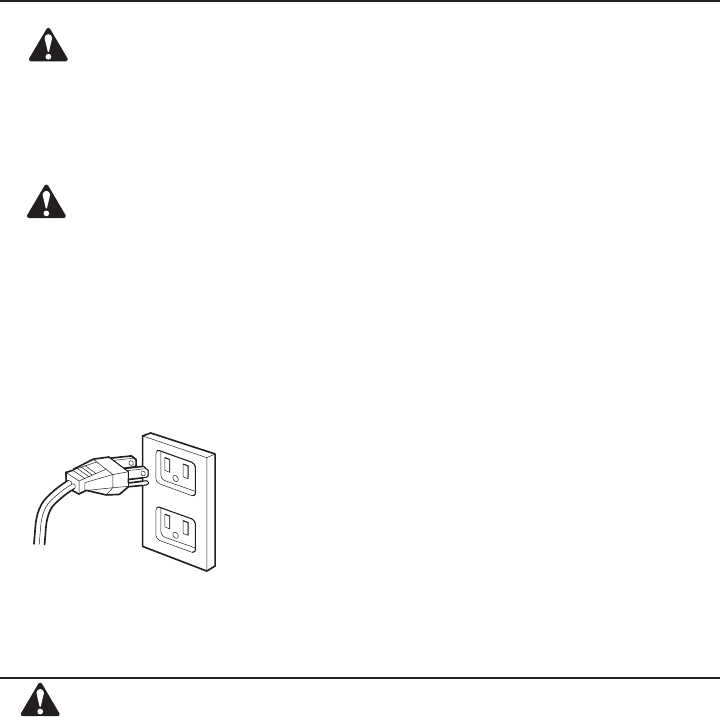
GROUNDING INSTRUCTIONS
To reduce the risk of injury to persons:
UTENSILS
DANGER
Electric Shock Hazard
• Touchingsomeoftheinternal
component scan cause
serious personal injury or
death. Do not disassemble
this appliance.
WARNING
Electric Shock Hazard
• Improperuseofthe
grounding can result in
electric shock. Do not plug
into an outlet until appliance
is properly installed and
grounded.
Three-pronged (grounding)
plug
Properly polarized and
grounded outlet
CAUTION
Personal Injury Hazard
• Tightly-closedutensilscould
explode. Closed containers
should be opened and
plastic pouches pierced
before cooking.
This appliance must be grounded. In the event of an elec-
trical short circuit, grounding reduces the risk of electric
shock by providing an escape wire for the electric current.
This appliance is equipped with a cord having a grounding
wire with a grounding plug. The plug must be plugged into
an outlet that is properly installed and grounded. Consult
aqualiedelectricianorservicepersonifthegrounding
instructions are not completely understood or if doubt
exists as to whether the appliance is properly grounded. If
it is necessary to use an extension cord, use only a 3-wire
extension cord that has a 3-pronged grounding plug, and
a 3-slot receptacle that will accept the plug on
the appliance.
• Ashortpower-supplycordisprovidedtoreducethe
risks resulting from becoming entangled in or tripping
over a longer cord.
• Longercordsetsorextensioncordsmaybeusedif
care is exercised in their use.
• Ifalongcordorextensioncordisused:
1) The marked electrical rating of the cord set or
extension cord should be at least as great as the
electrical rating of the appliance.
2) The extension cord must be a grounding-type
3-wire cord, and
3) The longer cord should be arranged so that it will
not drape over the counter top or tabletop where it
can be pulled on by children or tripped over
unintentionally.
See following page for further instructions “Materials you
can use in microwave oven or to be avoided in
microwave oven.”
Utensil Test:
1. Fill a microwave-safe container with 1 cup of cold
water (250 ml) along with the utensil in question.
2. Cook on maximum power (PL 10) for 1 minute.
3. Carefully feel the utensil. If the empty utensil is warm,
do not use it for microwave cooking. Do not exceed 1
minute testing time.
CAUTION:
1. Do not use plastic containers for testing.
2. Some containers and dishware may be warm (or hot)
in only one area. Do not use a container that becomes
warm anywhere.
-6-


















